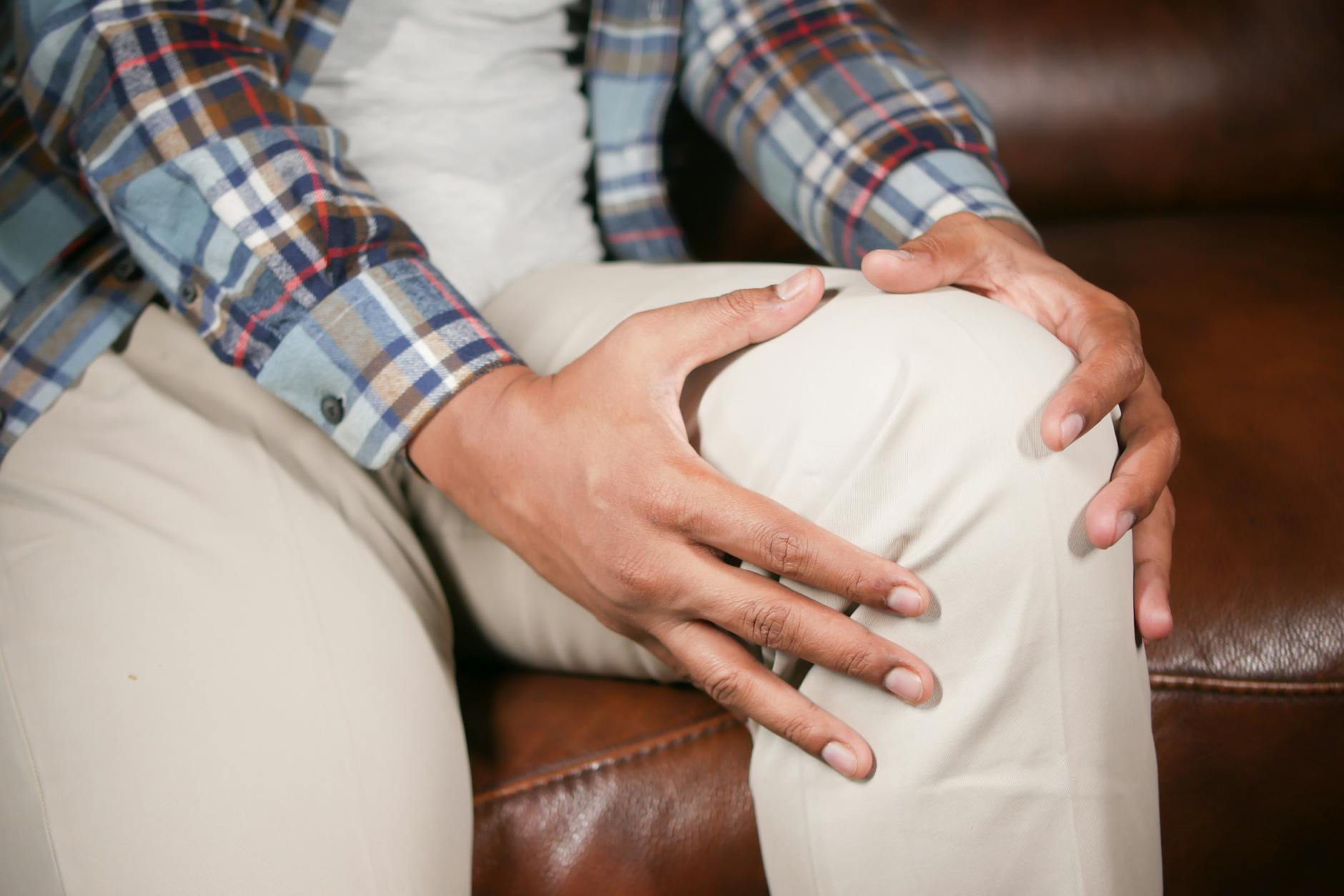
You open your eyes. Nothing hurts yet. Then you shift your leg. A sharp reminder. It’s there again. You try to sit up slowly. One joint resists. Another follows. You breathe through the pull. It’s not unbearable—but it’s always present.
It’s not unbearable—but it’s always present
You swing your legs down. Ankles ache. Knees complain. The floor feels harder today. You stand carefully. Your hips hold just enough. You shuffle toward the bathroom, already adjusting your balance.
You shuffle toward the bathroom
You don’t remember when it started. There wasn’t a fall. No single injury. Just small discomforts that kept staying. That grew louder. That began to structure your day without asking.
Just small discomforts that kept staying
You stretch because you have to. You warm your body like it’s a machine from another century. You move gently. Slowly. Because sudden movements come with consequences. Sometimes hours later.
Sudden movements come with consequences
You dress in soft fabrics. Avoid buttons. Opt for shoes you don’t need to bend for. You plan what you wear based on how easily you can remove it. Pain shapes decisions no one sees.
Pain shapes decisions no one sees
The stairs are different now. Not impossible. Just measured. You use the railing. Not always. Just when no one’s looking. You pause before every descent. You know which step will hurt the most.
You pause before every descent
People ask how you are. You say “fine.” You’re not lying. You’re just tired of the long version. You’re tired of tracking each joint like a separate person.
You’re tired of the long version
You keep medications nearby. Pockets. Drawers. Bags. Some help. Some don’t. You can’t always tell. You try them anyway. Because doing nothing feels worse.
You try them anyway
You try heat. Ice. Massage. Creams. Needles. Tools. Sometimes they help. Sometimes they shift the pain to another joint. You start calling it “trading.” One relief for another discomfort.
You start calling it “trading”
You adjust your chair. You prop your feet. You avoid couches that sink too deep. You walk the house before long meetings. You stretch in elevators. You lean against walls that hold your weight when your legs won’t.
You lean against walls that hold your weight
You work through the pain. You rest through the pain. You stop distinguishing between activity and recovery. Everything now includes pain. You learn to live with it without giving it all the space.
You learn to live with it without giving it all the space
You sleep differently. Pillows between joints. Blankets tucked to support knees. You wake often. But stay still to avoid reigniting the ache. Sleep isn’t rest anymore. Just temporary quiet.
Sleep isn’t rest anymore
Cold weather makes it worse. You layer more. Heat pads under sweaters. Gloves indoors. Rain predicts your flare-ups better than any calendar. You watch the sky like a forecast for pain.
You watch the sky like a forecast for pain
You’ve tried physical therapy. Some stretches help. Others hurt. You memorize the good ones. You forget the rest. You pace yourself. You rest mid-task. You stop expecting to feel “better.”
You stop expecting to feel “better”
Some foods make it worse. You don’t always know which. You eat carefully. You journal symptoms. You skip wine. You avoid sugar. You trade flavor for fewer flare-ups.
You trade flavor for fewer flare-ups
You miss spontaneity. You miss walking without preparing. Dancing without pain the next day. Carrying things without hesitation. You don’t stop doing them. You just do them slower.
You just do them slower
You’ve learned to say no. To decline invites without guilt. To plan around flare-ups. To choose stillness when everything in your body feels like it’s pulling apart.
You choose stillness when everything in your body feels like it’s pulling apart
Support helps. Friends who understand your pacing. Routines that allow rest. You stop pretending. You stop minimizing. You say, “Today’s not a good day,” and let that be enough.
You say, “Today’s not a good day”
You start focusing on what helps. Warm water. Slow walks. Morning quiet. Gentle yoga. Laughter that doesn’t pull at your ribs. Small things that remind your body it’s still part of you.
